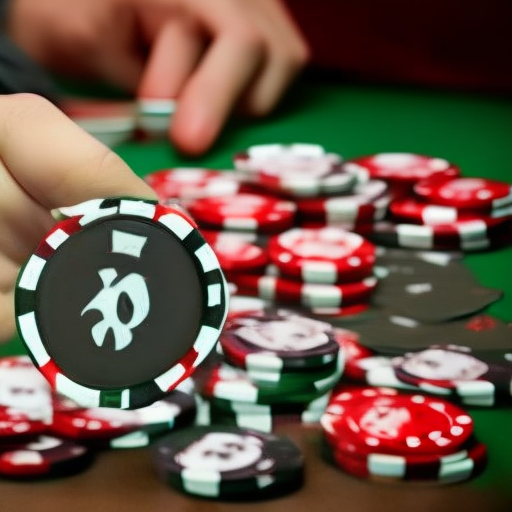Poker is all about pushing the boundaries, pushing your bluffs, and raising the stakes. The key to a winning hand lies in the ability to know when to bluff, and when to hold your cards close. With a proper understanding of when to bluff and when to hold, you can maximize your win rate at Texas Hold’em. Ready to take your chances? Let’s explore how to maximize your win rate with bluffing in Texas Hold’em.
1. Understanding Bluffing
Bluffing is a common tactic in various fields, from card games to negotiation, and even in everyday conversations. It involves making someone believe in something that may not necessarily be true, to gain an advantage. However, bluffing is not just about lying outright. It’s about skillfully manipulating the situation to one’s favor without being dishonest.
A classic example of bluffing is in poker games. A player may raise their bets or show a strong hand to intimidate other players into folding, even though they have a weak hand. Bluffing can also be seen in the workplace, where an employee may pretend to know more than they actually do to gain a promotion. Ultimately, bluffing requires a careful balance of confidence, assertiveness, and situational awareness to successfully pull off.
2. Identifying Bluffing Opportunities
One of the keys to being a successful poker player is mastering the art of . This requires keen observation skills and the ability to read your opponents. Pay attention to their body language, betting patterns, and previous actions to help you determine when they might be bluffing.
For example, let’s say you’re playing in a game where one of the players appears to be tight and conservative. Suddenly, they make a large bet that seems out of character. This might be a sign that they’re bluffing and trying to scare you off the hand. Keep in mind, however, that some players are very good at false tells and can trick even experienced players. Therefore, it’s important to be able to discern between real and fake tells to make the most of potential bluffing opportunities.
3. Using Bluffing to Maximize Win Rate
Bluffing is one of the most powerful tools in poker. It’s a cornerstone of the game and an essential part of every player’s arsenal. However, using it correctly requires a delicate balance of psychological intuition, knowledge of probability, and strategic thinking. At times, it’s a simple technique of lying to your opponent to make them think your hand is better than it is. Other times it involves taking calculated risks and making bets that appear more significant than the hand you hold.
One of the main advantages of bluffing is that it allows you to maximize your win rate in games. By making your opponent fold their cards, you end up winning the pot and taking their chips. And, the best part is that you don’t even have to have the best hand to do so! Of course, bluffing can also backfire if your opponent calls you out, and you end up losing chips. However, if implemented correctly, bluffing can be a highly effective way to boost your win rate and overall earnings. Some great scenarios to bluff are when your opponents might think you have a strong hand, but you have a weak one, or when a bluff can help you win a pot to make up the losses you suffered earlier in the game. Just remember, bluffing is a risky manoeuvre, but the satisfaction of pulling it off is exhilarating!
4. Staying Clear of Bluffing Traps
Picture this: You’re playing poker with some friends, and things seem to be going pretty well. You’ve got a decent hand, and you think you’ve got a good chance of winning. Then, one of your friends starts to make some big bets, and you start to feel a little nervous. Are they bluffing? Could they really have an unbeatable hand?
Don’t fall for it! Bluffing is a common strategy in many card games, but it’s also a trap that can cost you big time if you fall for it. Here are some tips for :
- Read your opponents: Keep an eye on your opponents’ behavior and betting patterns. If someone suddenly starts making big bets or getting overly aggressive, they might be trying to bluff you.
- Know your own limits: Don’t bet more than you can afford to lose. If you’re feeling nervous or uncertain, it’s better to fold and cut your losses.
- Stick to your strategy: Don’t get too caught up in the moment and deviate from your usual playing style. Stick to your strategy and play smart.
Remember, the key to avoiding bluffing traps is to stay focused, keep a clear head, and know when to cut your losses. With practice and patience, you can develop a winning strategy that will help you avoid the traps and come out ahead. Happy playing! There you have it: Bluffing in Texas Hold’em is a powerful strategy to maximize your win rate. With a bit of practice and confidence, bluffing can work to your advantage. Who knows? You might end up bluffing your way to a winning streak!